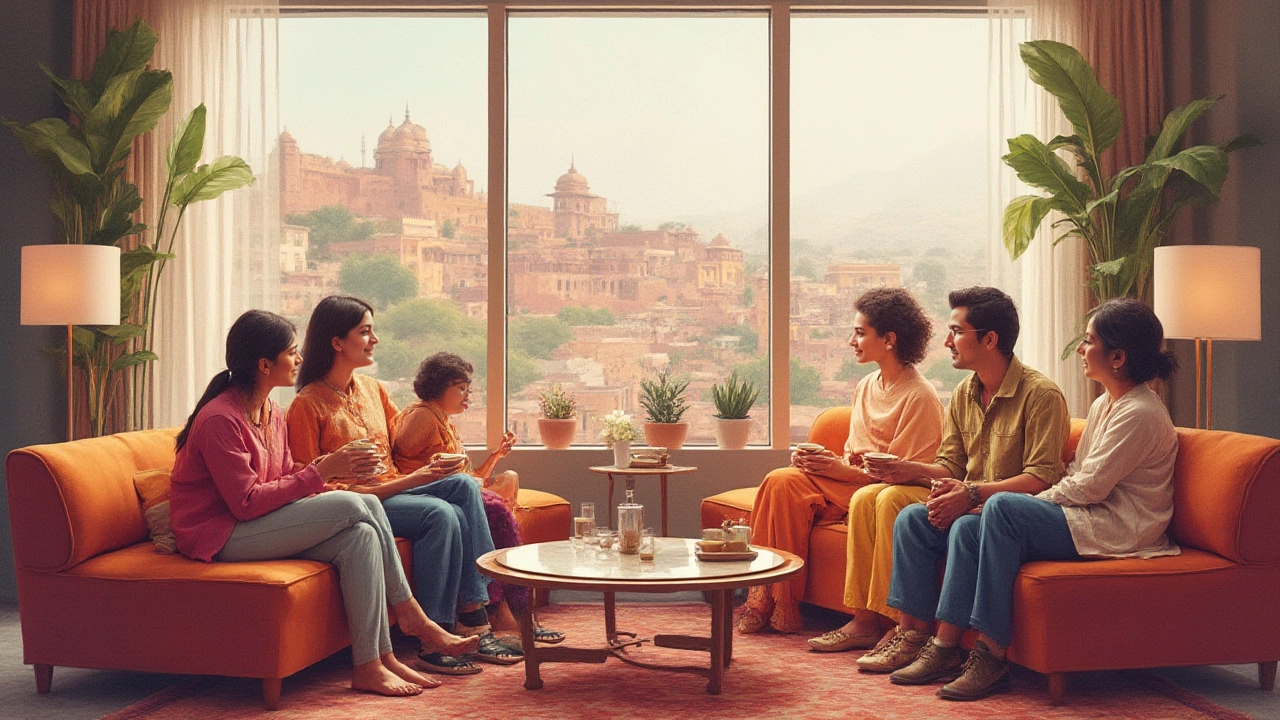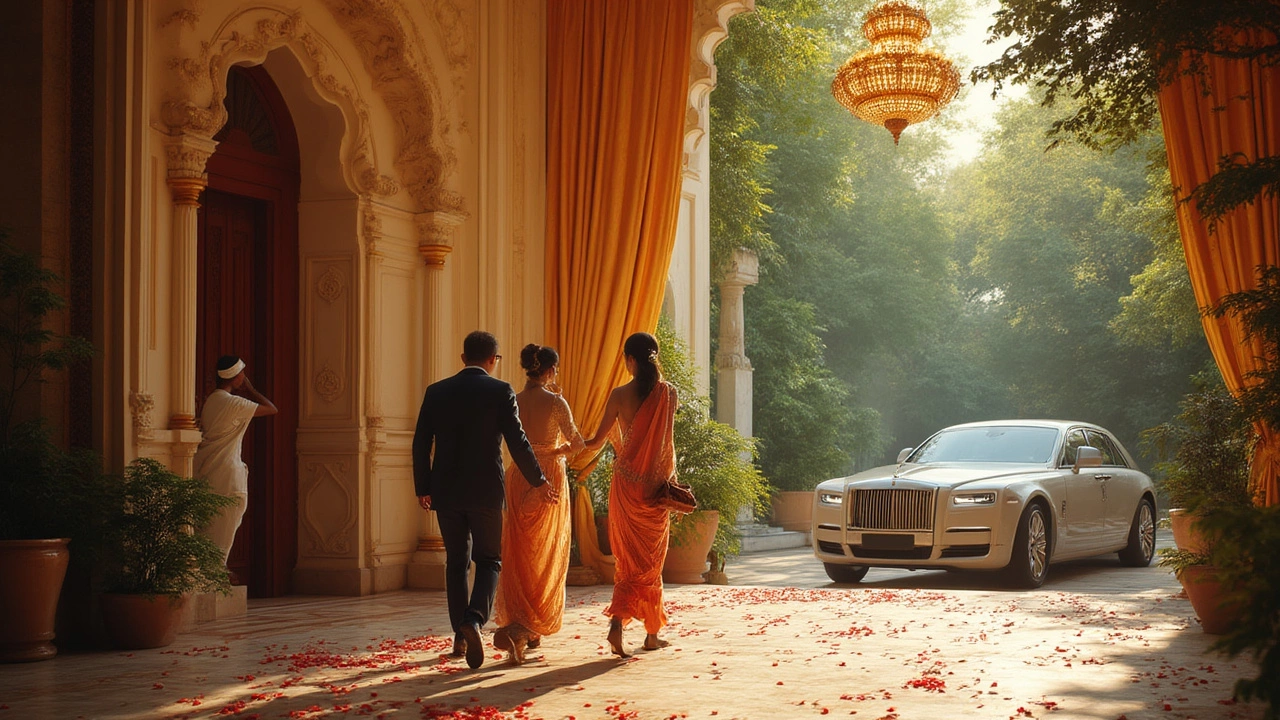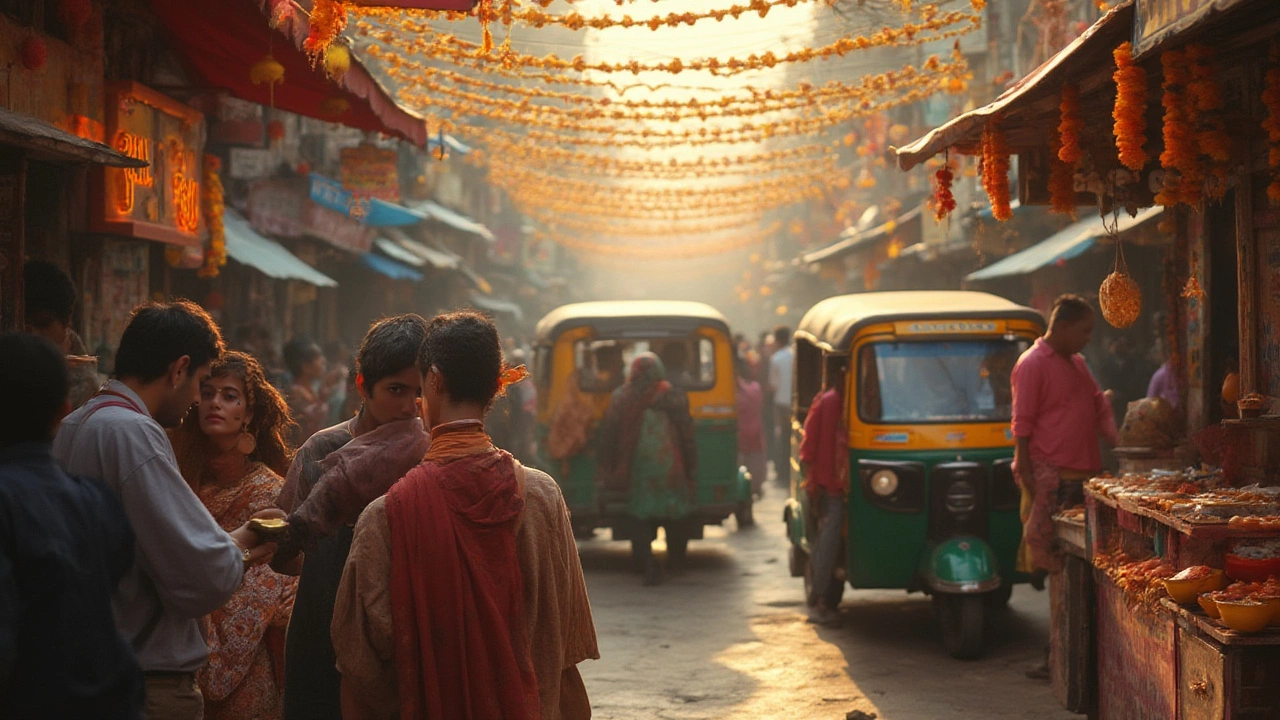Stop scrolling through endless forums and guidebooks. The first thing that hits you when planning a trip to India isn’t the number of cities—it’s the millions of rupees questions: how much will it REALLY cost? If you’ve scanned social media, you’ve probably seen backpackers boasting about dirt-cheap meals, digital nomads renting palaces for pennies, and five-star influencers posting poolside breakfast selfies. India delivers every kind of experience, but your wallet needs to be ready. I’ve found that most folks either wildly underestimate or overestimate what they’ll spend here. Let’s break it down—accommodation, transport, food, sightseeing, plus the sneaky costs nobody tells you about. You’ll find out whether you need $25 or $250 a day… and exactly what that gets you.
Travel Styles and Their Price Tags: What Type Are You?
If someone tells you “India is cheap,” ask them where they stayed and what they did. The cost in India depends completely on how you travel, and honestly, the spectrum is massive. You’ll see backpackers living on $15 a day (yes, in 2025, that’s still possible if you rough it), but there are also plenty of people blowing $500 a day on luxury resorts or heritage hotels. So, what’s the reality for YOUR style?
Here’s how daily costs break down in India, depending on your travel vibe:
| Type | Budget (USD/day) | Accommodation | Food | Transport | Treats |
|---|---|---|---|---|---|
| Backpacker | $20-$35 | Hostels/guesthouses (shared dorm or basic room) | Street food, dhabas | 2nd class train, buses, tuk-tuks | Occasional entry fees |
| Mid-range | $60-$100 | 3-star hotels, boutique guesthouses | Cafes, restaurants, some international meals | AC trains, domestic flights, ride apps | Guided tours, comfortable extras |
| Luxury | $200-$600+ | Heritage, 5-star hotels, premium resorts | Fine dining, fusion, private meals | Private drivers, business class trains/flights | Spa, private guides, unique experiences |
The jump between categories is massive. The good part? It’s insanely easy to mix and match. Maybe you love cheap street food but want a private driver for Rajasthan, or you’ll splurge in Mumbai but go basic in Goa. Expect big cost swings between cities. Mumbai and Delhi can cost double what you’ll spend in Udaipur, Varanasi, or Mysore. But extremes aside, your real costs come down to three big buckets: accommodation, daily eats, and how often you move around.

The Real Costs: From Bed to Buffet (and Everything Between)
Let’s unpack what you’ll actually pay in India by expense type. Prices listed below stick close to mid-2025 rates. Of course, the rupee moves, monsoon seasons affect rates, and Indian festivals (which happen year-round) can suddenly spike hotel prices. Don’t just read averages—look out for the helpful tricks that’ll keep your budget from bursting at the seams!
- Accommodation: A bed in a good hostel dorm can go for less than $10 if you avoid tourist traps, but comfort costs more. A solid double in a nice hotel, booked last minute online, usually lands between $40–$70 in most cities. Expect Taj properties or luxury palace hotels to rocket upwards of $300, often including spa breakfasts and butler service—but that’s splurging at its finest. Coastal states like Goa and Kerala have both ultra-cheap beach huts and lavish oceanfront villas; prices spike during Christmas and New Year. Bonus tip: Try early monsoon for hotel discounts—fewer crowds, lower costs.
- Food: Ever eaten chole bhature or dosas for $0.60? It’s legit in India’s streets and station cafes. If you stick to local eateries and avoid tourist joints, you can eat like royalty for $3–$5 daily. Add international coffee, air-conned restaurants, or a McSpicy Paneer treat and you’re inching up to $15–$20/day. If you crave gourmet or fine dining—think Mumbai rooftops or Delhi’s nouvelle cuisine—expect bills of $30–$60 per meal. Don’t forget “service charges” and “GST” often added, which can drive up the cost by another 5-18%.
- Transport: Indian trains are a rite of passage and still super affordable—think $5 for a 12-hour sleeper ticket, or $18 for an air-conditioned chair car. Buses connect every dot on the map, usually costing less than $2–$10 per ride, but may require nerves of steel. Domestic flights (IndiGo, Air India, Vistara) start around $30 if booked weeks ahead, but skyrocket to $150+ last minute or during festival rushes. Uber and Ola rides in major cities are way cheaper than most Western countries. Rickshaws, meanwhile, are legendary—haggle, but don’t expect to win every time.
- Activities & Entry Fees: Want to see the Taj Mahal? That’ll be around $15 for foreigners. Major sights usually charge foreigners $3–$15 per ticket. Temples are mostly free but sometimes have a “camera fee.” Jungle safaris, boat rides on the Ganges, and curated tours can cost $30+, but group tours save cash. It adds up, so factor in an average of $5–$20 per sightseeing day, unless you plan to chill on the beach all week.
- Hidden Extras: SIM cards ($4–$8 for basic data, easy at airport kiosks), laundry ($1/kilo), bottled water (50 cents a liter), and small tips (locals call them “baksheesh,” especially for help with bags or pointers at temples) should all be in your plan. No need for travel insurance in your calculations here, but don’t skip it—medical care in India is cheap by Western standards but can surprise you with processes and paperwork.
Here comes a cool money hack: Since demonetization, India’s digital payments scene exploded. Even roadside tea vendors often accept Google Pay or Paytm. Cash is handy in the smallest villages, but a credit/debit card and a local e-wallet will save you headaches (and ATM withdrawal fees, which can bite at $3–$5 per use). And don’t forget the infamous “foreigner price”—sometimes bus, train, or entry fees for international travelers are set higher. It’s official, not a scam, but it’s worth checking ticket windows and phone apps for “Indian” vs “Foreigner” rates so you’re not caught off guard.

Smart Budget Tips and Cost-Saving Moves for Every Traveler
Let’s get practical. There are clever ways to save (or, sometimes, waste) cash every single day. If you want your rupees to last longer—or just make room in your wallet for the next epic meal—these ideas make all the difference:
- Book trains and flights early: Sound boring? It’s the difference between a $10 and $80 train ride. Indian Railways tickets can vanish a month ahead for popular routes, especially in festival season. Use the IRCTC website or app to avoid third-party charges and long lines.
- Sleep smart: Pick hostels with kitchens if you’re on a tight leash—two-minute noodles for breakfast, noodles with chai for dinner. Many mid-range hotels include breakfast, and you can eat enough to skip lunch entirely. Not fancy? Maybe, but why pay extra for toast and jam?
- Eat local, skip international: Fancy imported drinks, Western food, and international chains seriously inflate prices. Indian thali (a whole meal on a plate) is epic and rarely costs more than $2–$4. Grab “chai” on the street for literal pocket change.
- Use apps to compare transport: Ride-hailing apps show you real-time rates so you’re not at the mercy of dodgy rickshaw meters. Indian public transport—metros in Delhi, Mumbai, Bangalore, and Kolkata—cost pennies and save traffic headaches, too.
- Travel overnight: Sleeper trains and buses save you a hotel bill and get you to your next stop bright and early. Always carry your passport, and lock up your valuables in the berth.
- Bargain, but be fair: Haggling over everything from market trinkets to tuktuks is expected, but remember many locals earn little, so don’t go overboard. Smile and walk away if the price isn’t right—it’s all part of the dance.
- Visit between April–September: Unless you crave festival crowds, this is shoulder and monsoon season—prices drop, and lines vanish at tourist sites. Beaches in Goa are quiet but cheap, and Himalayas are incredible once the rains stop.
- Stay connected the smart way: Grab an Airtel or Jio SIM as soon as you land. Easy, works in almost all towns, great for maps and digital wallets, and lets you book train tickets without Wi-Fi worries.
- Set alerts for flight deals: Airlines like IndiGo, Vistara, and Akasa Air run flash sales year-round. Sign up for alerts or use fare tracking apps before you even book your first night in India.
- Research festivals and strike days before booking: Don’t let Holi, Diwali, or a sudden bandh shut everything down—or make all the hotels in town double in price. Local calendars help you dodge surprise expenses.
- Master the art of the government museum: Indian government-run sights, museums, and parks charge a fraction of private ticket prices. The downside? Sometimes, shorter hours and sleepy staff. Still, it’s an eye-opener for history buffs.
- Pack light, shop local: Luggage fees on domestic flights sneak up if you overpack, and markets sell everything you need—clothes, chargers, even cheap sunglasses.
Now, if you’re the type who likes to see actual numbers, here’s a quick 2025 sample budget for 14 days for different travel styles (all amounts in USD):
| Type | 2 Weeks Accommodation | Food | Transport | Sightseeing/Tours | Extras | Total |
|---|---|---|---|---|---|---|
| Backpacker | $120 | $60 | $80 | $40 | $30 | $330 |
| Mid-range | $700 | $200 | $200 | $100 | $50 | $1,250 |
| Luxury | $2,800 | $700 | $400 | $400 | $150 | $4,450 |
So, India travel budget? If you stack up rupees to meet your ambition, you can live like a king or a prince—or a poetic pauper eating samosas on a rickety bench. For most travelers, $40 to $100 per day brings true comfort. Anything more, and you’re probably drinking masala chai in the pool of a palace. And let’s be honest, that’s a flex worth saving for.
